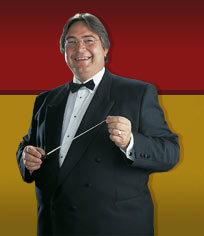For many musicians in the orchestral world the word vibrato is intrinsically linked with brass bands and to many professionals it typifies the worst aspect of the brass band movement.
Why do we do it? In my opinion the tradition of playing with vibrato comes from the days when we used to play symphonic arrangements. Arrangers of the day gave the euphonium cello and bassoon parts, cornets often played violin or high wind parts, and various instruments in the band would play the vocal solos in the operatic arrangements. Due to our transcribed repertoire the brass band basically played more in the style of a chamber orchestra than a modern day brass ensemble – this included vibrato. However, during my time in the brass band movement i’ve noticed attitudes to vibrato and it’s use has change. Most of the change has been brought about by new original repertoire and professional brass players (conservatoire trained) returning to the movement with an added colour in their sound field. These men such as Gregson, Snell, Watson and others have taught us there is more to tone colour than just playing with the same vibrato all the time.
It seems when I talk to young people they believe there are only two ways to play; with vibrato or without! Surely this is not the case. Listen to some of the world’s greatest and most successful artists; Nigel Kennedy, Luciano Pavarotti, Yo Yo Ma - they all vary the speed and depth of their vibrato to wonderful effect. I remember watching a video of the great cellist Paul Tortelier. He was giving a master-class demonstrating the finger vibrato (very fast and shallow), the wrist vibrato (a bit deeper and slower), and the arm vibrato (very slow and deep). He described how to execute them and demonstrated their application.
There are lots of different ways to learn vibrato. I’ve seen players use, the head vibrato - nodding their heads as they play, the finger vibrato - moving the hands over the valve top as the play, the throat vibrato - this sometimes creates a clucking noise in the sound, the diaphragm vibrato - this is based on volume more than pitch, and finally the jaw vibrato - an action similar to chewing gum.
The rule of thumb with most of these different approaches to the same outcome is, if it sounds ok then its fine. However, I was taught the, ‘jaw method’ and that is what I prefer to teach. For players wishing to develop their vibrato I suggest practising with a metronome at 112 crotchets per minute. Practice at various speeds and depths going from crotchets to quavers to triplets and finally to semi-quavers.
As brass players we don’t have many ways of changing tone colour apart from mutes. Molto vibrato and senza vibrato are only two; do not neglect the many other variations in between.
© Robert Childs |
